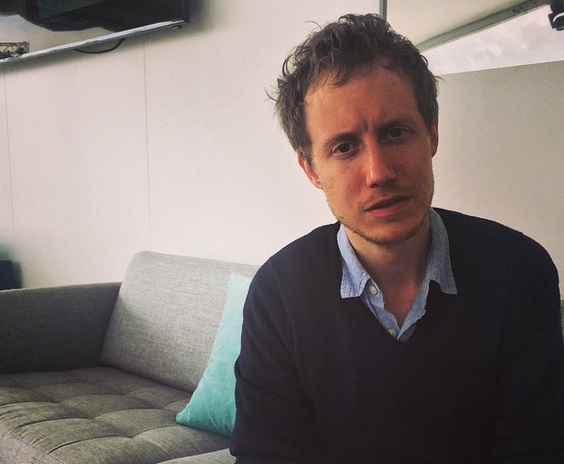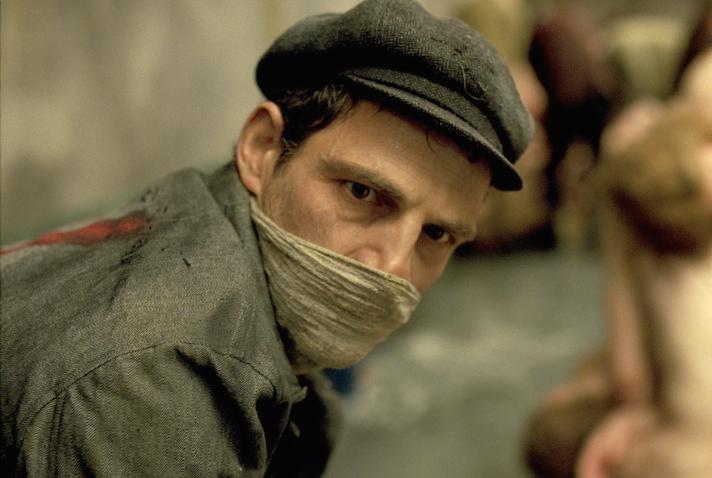By providing your information, you agree to our Terms of Use and our Privacy Policy. We use vendors that may also process your information to help provide our services. This site is protected by reCAPTCHA Enterprise and the Google Privacy Policy and Terms of Service apply.
Meet the First-Time Director Behind ‘Son of Saul,’ the Holocaust Drama That Wowed Cannes
Eric Kohn

 READ MORE: Cannes Review: Terrifying ‘Son of Saul’ is Unlike Any Holocaust Movie You’ve Seen Before
READ MORE: Cannes Review: Terrifying ‘Son of Saul’ is Unlike Any Holocaust Movie You’ve Seen Before
A few weeks before this year’s Cannes Film Festival, most of the film world hadn’t heard about Hungarian director László Nemes. That all changed when his bracing first feature, “Son of Saul,” screened in competition early in the festival.
The intense drama follows a prisoner at Auschwitz, a member of the Sonderkommandos tasked with disposing of dead bodies, attempting to bury the body of what he believes to be his dead son. Shot mostly in closeups with a visceral intensity and an immersive environment, “Son of Saul” offers a far more immediate portrait of Holocaust terror than other treatments of the topic to date. The movie was an instant success with many critics at the festival, quickly landing distribution with Sony Pictures Classics and generating hype as a potential front-runner for the festival’s Palme d’Or.
At 38, Nemes isn’t entirely a newcomer to the filmmaking practice. After studying film production at NYU, he worked for several years as an assistant director to the legendary Hungarian filmmaker Bela Tarr. But now that he has premiered his ambitious debut at the most important film festival in the world, Nemes can reap the rewards of his risky endeavor. Here, he tells us how he got this far making his first movie on such a daunting topic.

I’ve always wanted to speak about the experience of the camp. I didn’t want to do it the same way as others do, because I thought it was not authentic and couldn’t talk to these generations. It couldn’t have empathy, but something different that could work against that. I didn’t see it as ambitious or a radical directorial approach. It was my way of saying something that was really important for me and hasn’t been talked about in a way to reach the soul of the audience.
I think that what I came to understand is big stories such as the Holocaust are always made in a way that reassures the audience. In their fears, in their hopes, these are stories of survival. And the Holocaust is not about survival, it’s about the extermination of the Jews of Europe. I think it’s the difference in mechanism that was put in place unconsciously after the war by artists and people who came back and the messengers from the camp, but this complicates the perception of the Holocaust itself, the experience of the camp. It contributed to a dogma around it. It’s always the same path; you’re not confronted with anything. You show a lot, you tell things, you suggest the guilt lies with this guy or these others guys. It’s a well-established set of signals.
I wanted to bring the film to the level of one man. The experience in the camp is about limitation, the lack of information, the chaos and the organization of his experiences. This must have been something unknown to people before or after, something that was really hard to represent. But maybe we can find ways — in the imagination of the viewers — to open doors.
 The main character doesn’t pay attention to the horror around him because he is himself isolated — it’s a defense mechanism. So we don’t really show that, but as a viewer you catch glimpses of it. He pays attention to the quest of burying this child. Once you have this core concept — relying on the imagination of the viewer, showing less because you want them to feel more, this immersive strategy with sound and images — then you only have to follow this man as a companion on his journey. I think in this case it’s very organized as the camp itself was. It’s choreographed, but at the same time this man is hard to control, and my main actor was hard to control. So it’s about chaos and organization.
The main character doesn’t pay attention to the horror around him because he is himself isolated — it’s a defense mechanism. So we don’t really show that, but as a viewer you catch glimpses of it. He pays attention to the quest of burying this child. Once you have this core concept — relying on the imagination of the viewer, showing less because you want them to feel more, this immersive strategy with sound and images — then you only have to follow this man as a companion on his journey. I think in this case it’s very organized as the camp itself was. It’s choreographed, but at the same time this man is hard to control, and my main actor was hard to control. So it’s about chaos and organization.
When I was working for Bela Tarr, I learned about his extreme attention to detail — controlling the creative process to the point of involving a team to do that, and also having the technical crew as much as a creative crew. He knows who his focus should be on.
We wanted to maintain logic at all costs: logic of space, logic of work, the work processes, the hierarchy. So everything that could be preserved in its logic was very important. So I think you can feel this logic in the way the work was organized. Those are the rules of the game.
We had testimonies from the survivors of the Holocaust. We read those in several books. There was one direct source, which was the “Scrolls of Auschwitz,” the written diaries by the members of the Sonderkommando, that they buried before they revolted in 1944. So a lot of elements were given to us by these testimonies and then we consulted with historians. We had the constant supervision of a Hungarian historian specializing in the Holocaust, from checking the places where the numbers were to constructing the sets, how the paint would look, where the lighting would be, what were the bulbs and those kind of things.
We had a Yiddish adviser who helped us with this vernacular, with a special vocabulary recreated that had been lost. It gave us these many levels of realism, although the normal viewer cannot comprehend all these things. But we wanted to keep the authenticity as much as possible and make it believable.
I saw Claude Lanzmann, the director of “Shoah,” at one screening and started talking to him. Afterward, four different people posted pictures about it. He said that my film was good, which is apparently kind of revolutionary, but for me it wasn’t that surprising. I don’t mean to be pretentious, but I think he’s been frustrated by representations and visual strategies associated with the Holocaust, which I have also questioned.
I am really interested in making movies about being with people in space and time. I think you can feel it in this film, but you will feel it the next one probably not in this way. Because this had to be very disciplined due to the moral constraints. But I think the organic quality of the world that I want to explore with film is something that I want to question more. I’m also interested in telling stories of the past, without the historical drama approach, by being authentic. I think there’s room for that.
By providing your information, you agree to our Terms of Use and our Privacy Policy. We use vendors that may also process your information to help provide our services. This site is protected by reCAPTCHA Enterprise and the Google Privacy Policy and Terms of Service apply.

















